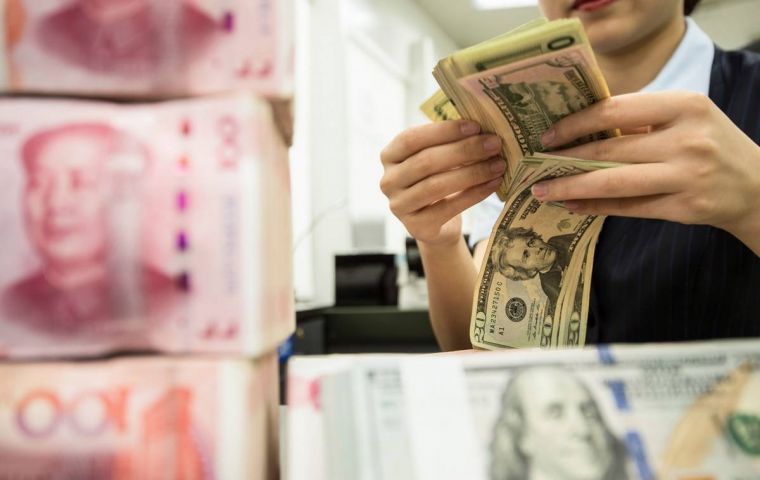MercoPress. South Atlantic News Agency
Money markets react to US decision reversing China as a currency manipulator
 The announcement came as a high-level Chinese delegation arrived in Washington ahead of Wednesday's signing of a trade agreement aimed at easing tensions
The announcement came as a high-level Chinese delegation arrived in Washington ahead of Wednesday's signing of a trade agreement aimed at easing tensions The Yen plumbed an eight-month low while the Yuan climbed to its highest level since July on Tuesday after the U.S. Treasury Department reversed its decision in August to designate China as a currency manipulator.
The announcement came as a high-level Chinese delegation arrived in Washington ahead of Wednesday's signing of a trade agreement aimed at easing tensions between the two countries.
The dollar hit an eight-month high of 109.95 yen in U.S. trade on Monday and last stood at 109.93 yen . The Japanese currency has weakened about 1.3 per cent so far this year.
In contrast, the offshore yuan traded at 6.881 Yuan per dollar , near its strongest since late July, having gained about 1.2 per cent so far this year.
“Washington's decision to lift its designation of currency manipulator on China has added to the positive mood that has been already in place ahead of the signing of the trade deal,” said Minori Uchida, chief currency strategist at MUFG Bank.
But Uchida also said the dollar/yen is likely to face an uphill battle beyond the 110 yen mark, because the dollar is already expensive relative to the U.S.-Japan yield gap which it tracks fairly closely.
“The main driver of the dollar/yen is the yield gap. Last year, when the dollar was above 110 yen, the yield gap was about 2.4 percentage points. Right now it is about 1.8-1.9 percentage points. And we could see a setback if the upcoming trade deal does not go beyond what has been already reported,” he added.
The risk-on mood in financial markets mildly supported the euro against the dollar. The European common currency, on a recovery after hitting a two-week low of US$1.10855 on Friday, last traded at US$1.1136 ,
Sterling came under renewed pressure after data showed Britain's economy grew at its weakest annual pace in more than seven years in November, raising the chances of a cut to interest rates.
Sterling traded at US$1.2990 , having fallen to a three-week low of US$1.2961 on Monday.




Top Comments
Disclaimer & comment rules-

Read all commentsThe US accused China of keeping their currency artificially low, and as soon as they stop it climbs...how ironic.
Jan 14th, 2020 - 10:10 am 0Commenting for this story is now closed.
If you have a Facebook account, become a fan and comment on our Facebook Page!